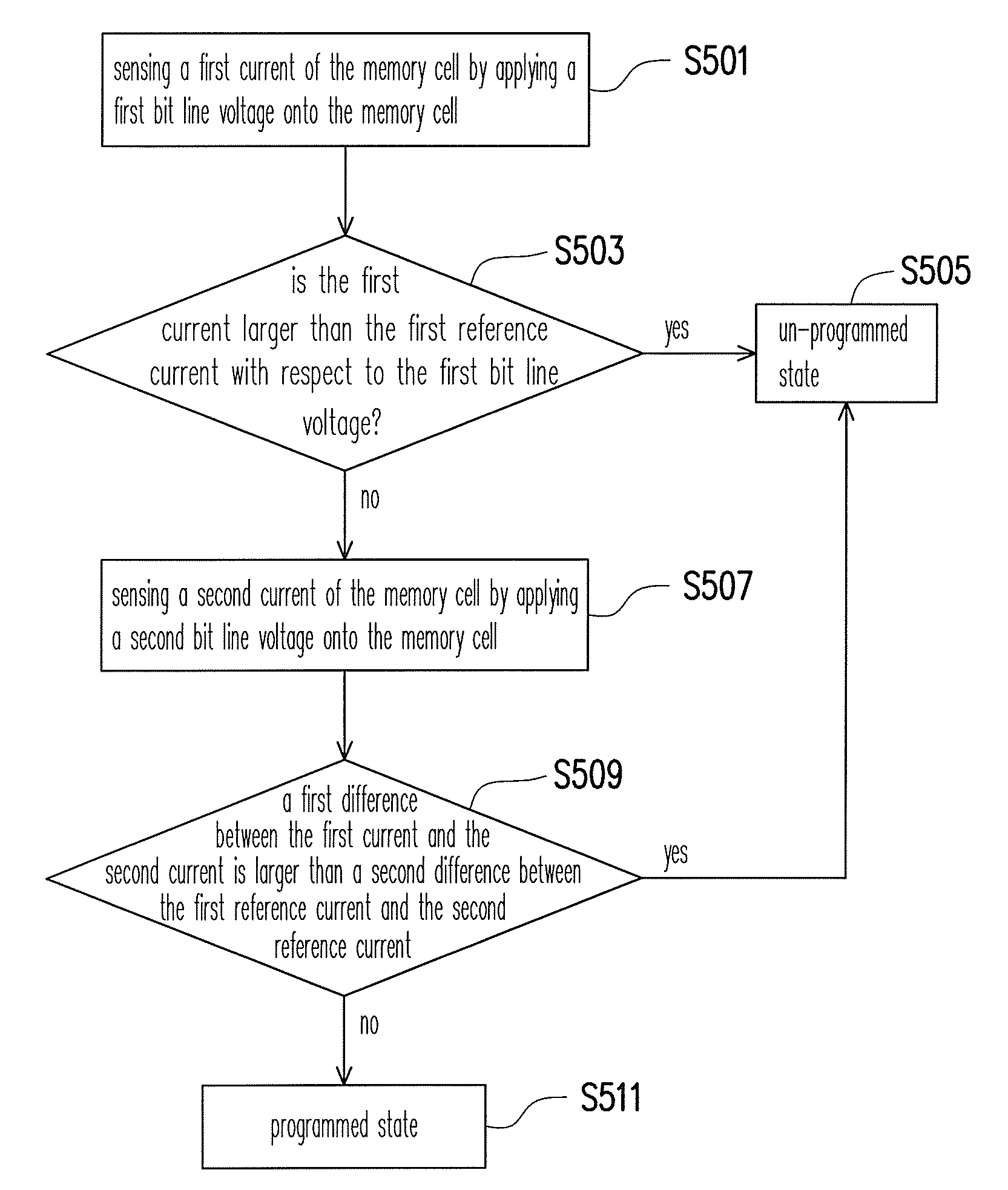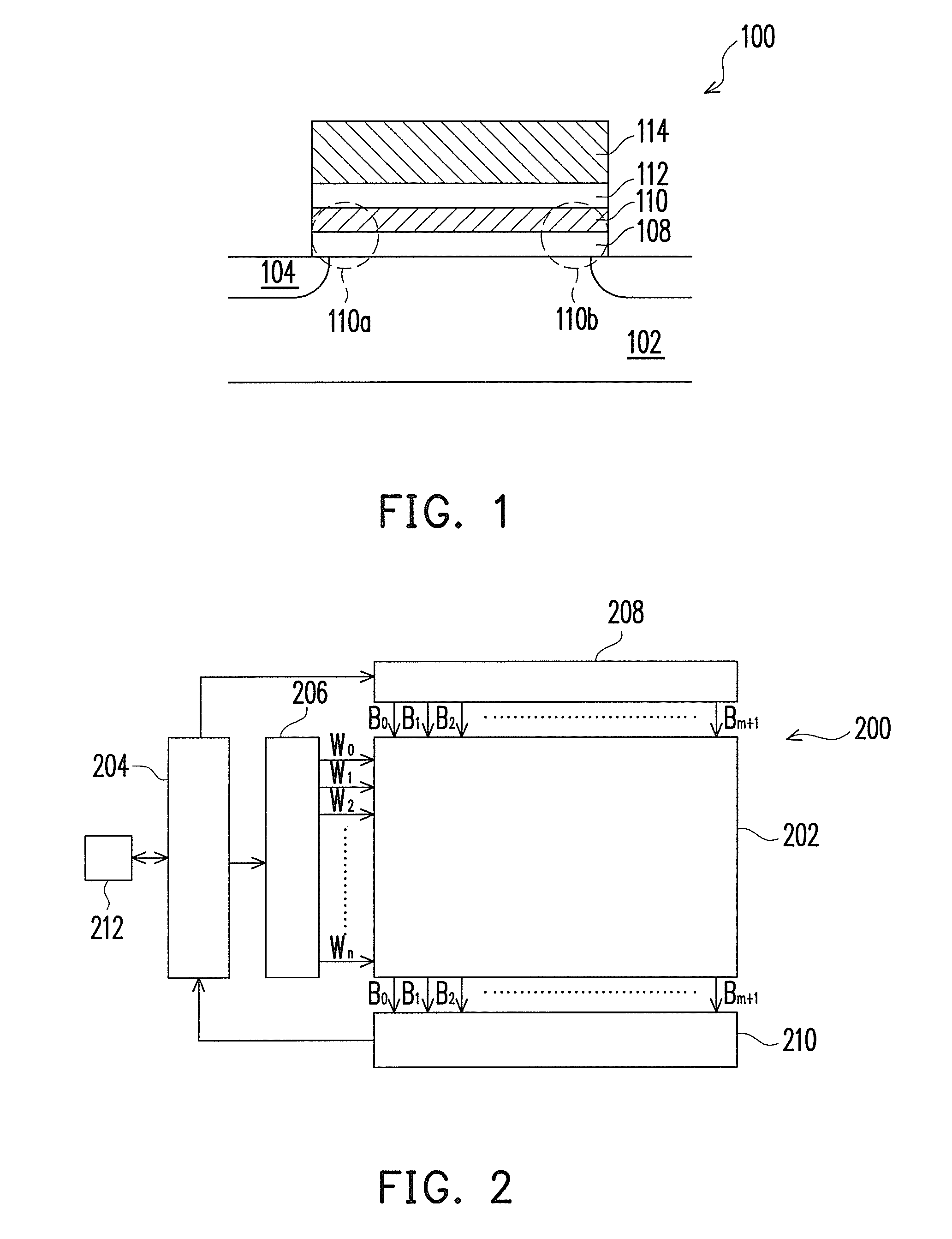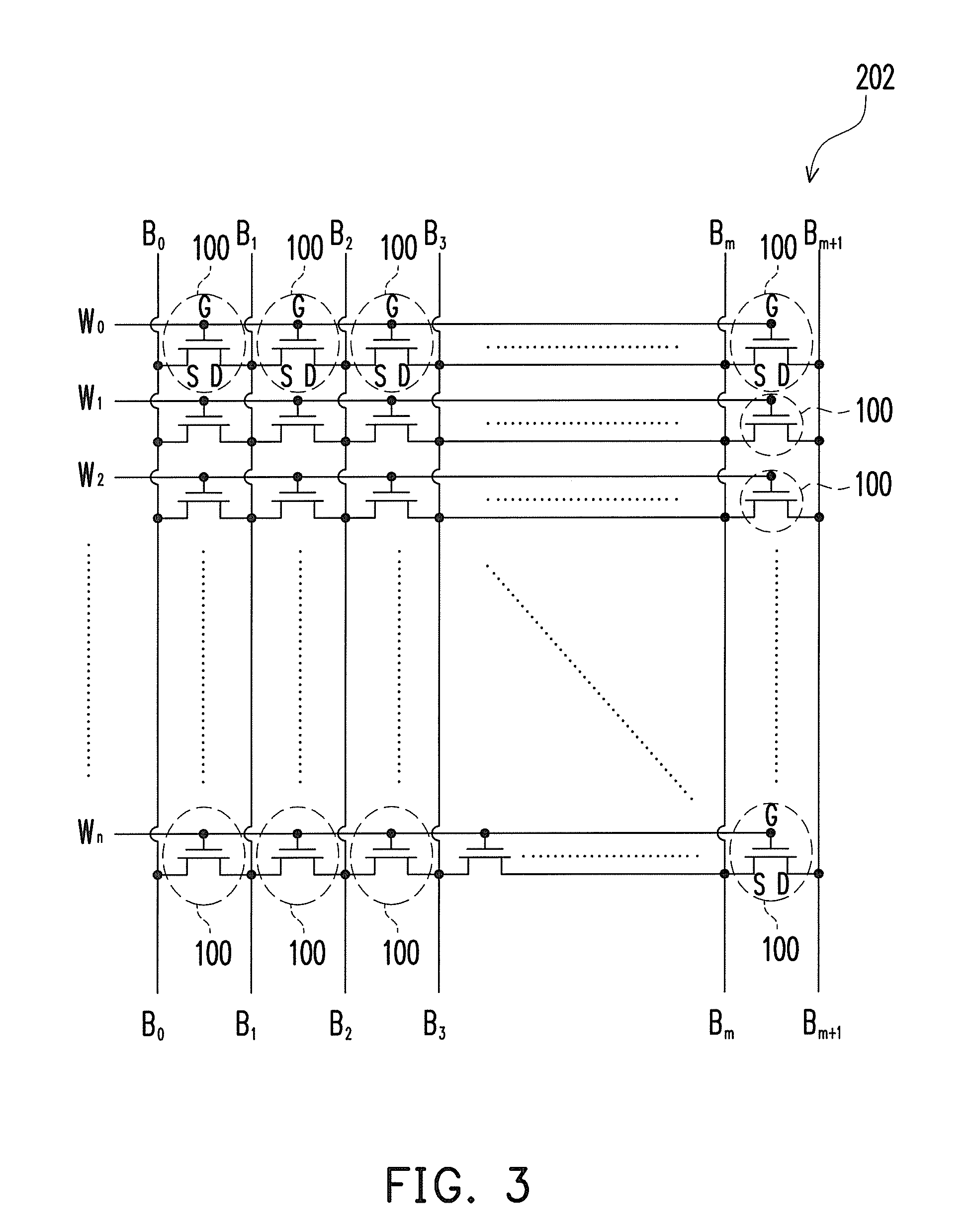Memory apparatus and method for operating the same
a memory and apparatus technology, applied in the field of memory and memory apparatus, can solve the problems of increasing the barrier for reading the first bit near the source region, affecting the performance of two-bit memory cells, so as to achieve the effect of reducing the second bit
- Summary
- Abstract
- Description
- Claims
- Application Information
AI Technical Summary
Benefits of technology
Problems solved by technology
Method used
Image
Examples
Embodiment Construction
[0033]FIG. 1 is a sectional view of a memory cell according to one embodiment of the present invention. As shown in FIG. 1, the memory cell 100 has a substrate 102 having two source / drain regions 104 formed therein. A bottom isolation layer 108 of the memory cell 100 is formed over the channel between the source / drain regions 104. On top of the electrical isolation layer 108 is a charge trapping layer 110, which is electrically isolated from the substrate 102 by the isolation layer 108. The hot electrons are trapped as they are injected into the charge trapping layer 110, such that the threshold voltage of the memory cell 100 would be adjusted under control. A top isolation layer 112 are formed over the charge trapping layer 110 to electrically isolate a conductive gate 114 from the charge trapping layer 110. The memory cell 100 has a first data storage 110a near one of the source / drain regions 104 and a second data storage 110b near the other one of source / drain regions 104. Each o...
PUM
 Login to View More
Login to View More Abstract
Description
Claims
Application Information
 Login to View More
Login to View More - R&D
- Intellectual Property
- Life Sciences
- Materials
- Tech Scout
- Unparalleled Data Quality
- Higher Quality Content
- 60% Fewer Hallucinations
Browse by: Latest US Patents, China's latest patents, Technical Efficacy Thesaurus, Application Domain, Technology Topic, Popular Technical Reports.
© 2025 PatSnap. All rights reserved.Legal|Privacy policy|Modern Slavery Act Transparency Statement|Sitemap|About US| Contact US: help@patsnap.com



